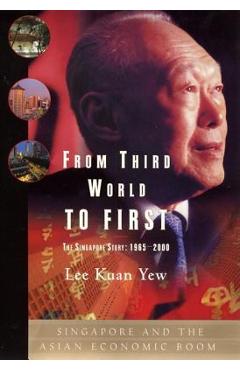The First Asians in the Americas: A Transpacific History - Diego Javier Luis

Detalii The First Asians in the
libris.ro
313.88 Lei
348.75 Lei
History
Diego Javier Luis
The First Asians in the - Disponibil la libris.ro
Pe YEO găsești The First Asians in the de la Diego Javier Luis, în categoria History.
Indiferent de nevoile tale, The First Asians in the Americas: A Transpacific History - Diego Javier Luis din categoria History îți poate aduce un echilibru perfect între calitate și preț, cu avantaje practice și moderne.
Preț: 313.88 Lei
Caracteristicile produsului The First Asians in the
Comandă The First Asians in the Online, Simplu și Rapid
Prin intermediul platformei YEO, poți comanda The First Asians in the de la libris.ro rapid și în siguranță. Bucură-te de o experiență de cumpărături online optimizată și descoperă cele mai bune oferte actualizate constant.
Descriere magazin:
The definitive account of transpacific Asian movement through the Spanish empire--from Manila to Acapulco and beyond--and its implications for the history of race and colonization in the Americas. Between 1565 and 1815, the so-called Manila galleons enjoyed a near-complete monopoly on transpacific trade between Spain\'s Asian and American colonies. Sailing from the Philippines to Mexico and back, these Spanish trading ships also facilitated the earliest migrations and displacements of Asian peoples to the Americas. Hailing from Gujarat, Nagasaki, and many places in between, both free and enslaved Asians boarded the galleons and made the treacherous transpacific journey each year. Once in Mexico, they became chinos within the New Spanish caste system. Diego Javier Luis chronicles this first sustained wave of Asian mobility to the early Americas. Uncovering how and why Asian peoples crossed the Pacific, he sheds new light on the daily lives of those who disembarked at Acapulco. There, the term chino officially racialized diverse ethnolinguistic populations into a single caste, vulnerable to New Spanish policies of colonial control. Yet Asians resisted these strictures, often by forging new connections across ethnic groups. Social adaptation and cultural convergence, Luis argues, defined Asian experiences in the Spanish Americas from the colonial invasions of the sixteenth century to the first cries for Mexican independence in the nineteenth. The First Asians in the Americas speaks to an important era in the construction of race, vividly unfolding what it meant to be chino in the early modern Spanish empire. In so doing, it demonstrates the significance of colonial Latin America to Asian diasporic history and reveals the fundamental role of transpacific connections to the development of colonial societies in the Americas.

Produse asemănătoare

Britain, Japan and China, 1876-1895. East Asian International Relations before the First Sino-Japanese War, Paperback/Yu Suzuki
![]() elefant.ro
elefant.ro
Actualizat in 02/07/2025
317.99 Lei

Future Is Asian. Global Order in the Twenty-first Century, Paperback/Parag Khanna
![]() elefant.ro
elefant.ro
Actualizat in 02/07/2025
52.03 Lei

The First Sourcebook on Asian Research in Mathematics Education. China, Korea, Singapore, Japan, Malaysia and India, Hardback/***
![]() elefant.ro
elefant.ro
Actualizat in 02/07/2025
289.99 Lei

The First Asians in the Americas: A Transpacific History - Diego Javier Luis
![]() libris.ro
libris.ro
Actualizat in 05/06/2025
313.88 Lei

From Third World to First: Singapore and the Asian Economic Boom - Lee Kuan Yew
![]() libris.ro
libris.ro
Actualizat in 05/06/2025
234.36 Lei
Produse marca Diego Javier Luis

The First Asians in the Americas: A Transpacific History - Diego Javier Luis
![]() libris.ro
libris.ro
Actualizat in 05/06/2025
313.88 Lei